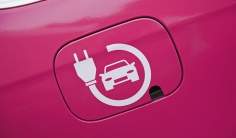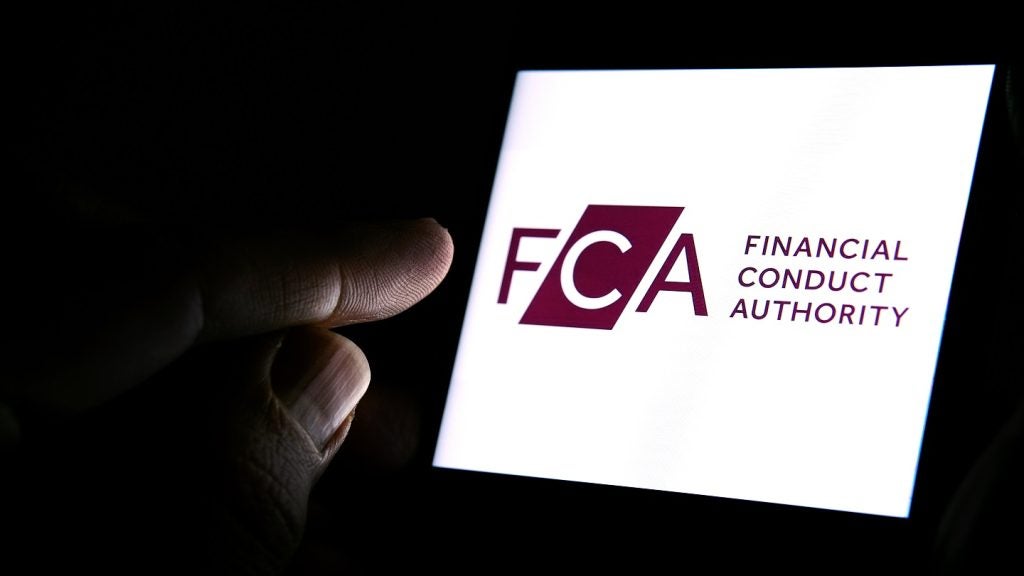
Richard Brown runs a voltmeter over the electric vehicle finance market with British Gas, Car Loan 4U, Hitachi Capital and RCI FS.
The global market for alternatively-fuelled vehicles (AFVs), particularly electric vehicles (EVs) and electric cars, may be a fraction of the overall motor market but it’s one in the midst of production and marketing activity. As with any regeneration of technology, after the models take a grip, finance follows.
Nissan has just celebrated the 50,000th Leaf registration, and 10,000th in Europe, since the model went on sale in March 2011. The manufacturer has also demonstrated its faith in the European and UK markets by switching production of the Leaf to its Sunderland factory, putting it alongside the Juke and Qashqai, two of the success stories of the past decade for the Japanese brand. This month, Andy Palmer, executive vice-president and executive committee member of the Nissan Motor Company, told delegates at the Society of Motor Manufacturers and Traders Motorexpo in Canary Wharf he expects "every car will feature electric motor propulsion of some kind" in future. On the same day as Palmer’s comments, 50 right-hand drive, 186-mile range, all-electric BYD e6 cars docked at Southampton to begin fleet trials and the first European-built Ford EV, a Focus, rolled off the Blue Oval’s Brentwood assembly line. Next year, the American marque will launch the C-Max Energi plug-in hybrid, followed by the first Mondeo hybrid.
BMW, meanwhile, has announced it will supply and support the BMW i electric-drive sub-brand across 46 UK dealerships. The all-aluminium chassis i3 will go on sale later this year, accompanied by the plug-in hybrid i8 sports car, for which BMW says it has taken its first deposits and registered the interest of 6,000 drivers. On the continent, the BMW Group has partnered with Daimler, Bosch, Siemens and others in a joint venture to form Hubject GmbH, which will facilitate the pan-European charging of EVs, easy access to public charge stations throughout the continent, and joins up a charging infrastructure via the venture’s eRoaming platform.
Beyond EVs, other alternative fuels are still receiving R&D and marketing money, with Fiat launching a twin-cylinder, methane-powered engine on the Panda in 2012, followed by the 500L and Lancia Ypsilon, and Hyundai agreeing its first European lease deal for the ix35, which runs a hydrogen-powered fuel cell.
Hyundai will supply the ix35 models for the fleet of the City of Copenhagen, and while the capital of Denmark aims to be carbon-neutral by 2025, the capital of the UK is likewise pushing for a greater concentration of AFVs on its streets. As of July, the CO2 exemption threshold for the London Congestion Charge, determined by Transport for London, will be lowered to the point every traditional petrol and diesel engine car will have to pay the levy.
Early adoption in the UK so far appears to be in fleet, in small numbers, and by companies associated with technological advancement. At the end of May, Microsoft took on two Leafs and two charge points at its UK headquarters in Reading for use in its company car scheme – its first 100% electric vehicles, while Edmundson Electrical invested in three extended-range EV Vauxhall Amperas and French EV manufacturer Mia-Electric has launched its first model for the UK fleet market to coincide with the change to the Congestion Charge.
How well do you really know your competitors?
Access the most comprehensive Company Profiles on the market, powered by GlobalData. Save hours of research. Gain competitive edge.

Thank you!
Your download email will arrive shortly
Not ready to buy yet? Download a free sample
We are confident about the unique quality of our Company Profiles. However, we want you to make the most beneficial decision for your business, so we offer a free sample that you can download by submitting the below form
By GlobalData"There is a very real and practical place for EVs in the UK vehicle market," explains Paul Evans, managing director of Venture Automotive Holdings, designated importer of the brand, "but, we are realistic in the best place for them. Urban environments, short journeys and regular return-to-base delivery fleets are ideal for electric vehicles. That’s where the cost per mile and zero emissions benefits are greatest."
Charging points
Similarly, Ryan Dignan, director at online-led motor finance broker Car Loan 4U, welcomes the CO2 threshold reduction, saying it "is for the greater good". On top of the plug-in grant for cars (up to 25% or £5,000 of the retail cost) and vans (up to 20% or £8,000), the UK Government has made £37m available to meet up to three-quarters of the cost of home installation of charge points, part of £400m earmarked by the coalition to promote low-emission technology. According to a survey on behalf of the intermediary in April, the infrastructure of fuel supply for EVs is possibly the greatest impediment to the vehicles becoming popular with 64% of 2,000 respondents worried about finding a charge point for an electric car.
"As new electric cars such as the new Leaf continue to improve, and the Government starts to install more charging points in more readily accessible places," says Dignan, "we will see more and more electric vehicles being bought with car finance."
Added to that, British Gas is working with Hitachi Capital Vehicle Solutions (HCVS) and RCI Financial Services (RCI FS) among others, to offer residential and commercial installations of vehicle charging points, often rolled into the finance package.
Andreas Atkins, head of the EV services team at British Gas, explains the scheme and public funding allows British Gas to offer an installation price starting ‘from-zero’, which he believes will be taken up by most EV purchasers.
"It just makes sense," says Atkins. "The criteria put in for the funding includes off-street parking and phone reception for data-enabled charging points to communicate. As long as you have that I don’t see why the majority wouldn’t take up the free charge point installed."
Although Steve Gowler, managing director at RCI FS, says public investment in charging points has been interrupted by the ongoing economic gloom, that shortfall could be covered by such provision of domestic charging points, thus quelling the demand for "massive infrastructure" to kick-start the EV market. However, Gowler admits it might not be convenient for those in a flat on the 20th storey.
So, the thinking goes: the more EVs are on the streets, the greater the number of permanent private charge points and demand for public charge points, the greater the infrastructure, the more EVs will be bought.
Meanwhile, the cost of early generation EVs, felt to be prohibitive by 43% of those surveyed by Car Loan 4U, can be counteracted by the demonstration of affordability, for example, by spreading costs of both car and charge point into monthly payments, as British Gas and HCVS are doing, or managing the price with what Gowler calls an "aggressive" PCP, such as Nissan are offering through RCI FS.
To underline the importance of finance to both retail and commercial EV uptake, not only was the first Mia-Electric registration in the UK a retail sale, it was sold on finance, arranged by Car Loan 4U, its first EV deal. As Peter Atkinson, head of marketing at HCVS, explains: "As a leasing company, we’re able to eliminate the upfront cost of purchasing EVs outright."
Perception and reality
Among finance companies, optimism in the EV market is tempered by a practical appreciation for how much of a change must occur on British roads. Companies hope the latest tranche of public money and the rise of pump prices may help, but there’s no denying the weight of consumer caution.
"There have traditionally been three important challenges to achieving real scale in the EV market," explains Atkinson, "technology, price and infrastructure."
"In all of these areas, part of the problem is making sure that consumer perception keeps up with the reality. The industry has already come a long way on the technological problems encountered in the early days: battery life and range anxiety just aren’t a concern with some of the new models."
Or, as Atkins at British Gas, says: "It’s the chicken and the egg."
Atkins predicts EV sales of between 4,000 and 5,000 units in 2013, "a small uplift" on 2011, but agrees the crux lies with "getting the infrastructure in there and getting local authorities to take action."
To this end, British Gas and HCVS have increased their work with local authorities, running a conference earlier in the year to explain how funding works and how the authorities can apply for it.
"From that," explains Atkins, "we understand OLEV (Office for Low Emission Vehicles) had 71 applications for funding which they are now assessing. There’s activity out there which will start to get the infrastructure in place and will be what people are waiting for, to move us up the curve with the vehicle purchases and give them that confidence."
A new leaf
Further along the curve are the funders and brokers, who are "at the moment constrained by the size of sales", according to Gowler, who manages finance provision for both Renault and Nissan, two brands to have equally embraced EV technology.
Although Renault has the Kangoo, the Fluance and the Twizy, as a panel van, four-door saloon and one-seater, respectively, the models are largely constrained to the fleet, company car and rental markets. With Renault retail finance penetration therefore hard to gauge, says Gowler, much of the RCI FS retail experience so far has been with the Nissan Leaf.
However, Renault is about to launch the Zoe in the UK, "which will be effectively a retail car" and give RCI FS "a better idea" on finance strategy for the brand.
Just as the finance models for Renault and Nissan EVs have become closer, with battery leasing now available on both brands, so the Zoe and Leaf appear to be counterparts for Gowler, who says the "nature and size" of the Zoe, like the Leaf, will mean the bulk of sales will be retail and marketed on a similar PCP model.
Gowler estimates the retail finance penetration rate on the Leaf to be around 60%, "very similar to what we get for internal combustion engine cars", heavily supported by leveraging from the manufacturer.
"What Nissan did was have a very strong, aggressive PCP offer on the car. For us it’s been very similar to the normal car experience."
As well as demonstrating affordability, says Gowler, the PCP model removes residual values concern, of a particular concern in a market where technological advances can make products obsolete relatively quickly.
Carl Eccles, industry director at Car Loan 4U, shares the opinion both that a latent UK market for EV finance exists and that its fruition relies on public "perception", and places equal stock on advancement coming from outside and inside the automotive industry.
"With the government’s funding and a general consensus that EVs are the future, then the potential for this market to grow is huge," he says, "especially as more and more car manufacturers are consistently developing and launching new models."
And Atkinson agrees, citing the Zoe and its potential £14,000 price tag after the plug-in grant is applied, coupled with the installation scheme, means "price and infrastructure are no longer the problem they once were".
Obstacle lesson
Although ahead of consumers in their experience of the technology and manufacturer’s plans for it, the car finance industry is still learning about EVs and how to market them, and that finance may unlock the potential in the market.
"The pick-up has started," says Eccles. "We have only just financed our first EV, but there has certainly been more interest from customers exploring opportunities to purchase EVs."
Given the upfront cost of EVs, Gowler thinks finance "will help", because it makes the purchase "affordable for people", allowing them to then benefit from "longer-term savings in fuel costs".
Atkins agrees "absolutely", saying the experience of British Gas so far in facilitating employee car schemes and "conversations we’ve had with small businesses" have demonstrated, to customers and other funders, that having electric vehicle and infrastructure ownership costs broken into monthly payments "is a simple way to move around the obstacle".
Eccles refers to the changing perception as an increasingly "open conversation" which has, in turn, prompted increased EV sales and encouraged "a positive mood from funders". He adds there is little difference "in terms of marketing or arranging finance exclusively for EVs", and that Car Loan 4U will "allow our customers to apply for finance for any new or used car".
As one of those ‘encouraged funders’, Gowler concurs: "We’ve found traditional products work fine; hire purchase, PCP and leasing work just as well," he says. However, products such as PCP which "take the residual value risk away from customers probably have an advantage because they address one of the concerns. If in three years’ time the car retains a good value, you have the option to trade it in or pay off the balloon. If it doesn’t, you can give it back."
On every corner
With cost and charging reduced as barriers, the challenge then will be to assess who will be buying and driving EVs in the UK. At present, says HCVS’s Atkinson, "EVs remain concentrated amongst the green evangelists" and those who live in cities "who see electric as a cheap solution to their runaround". However, Atkinson expects the spread of charging points to take EV usage beyond "urban pockets".
Even so, "EVs won’t suit every single person," explains Atkins, "but they will become a substantial part of vehicles in the UK, reflected in larger fleets," although he cites travel-pattern research which suggests this may remain restricted to cities.
For Gowler, concern over the range of a vehicle is "more of a lifestyle issue". Although it may determine who drives an EV, it falls outside the remit of finance. While Gowler says EVs may not suit long-distance motorists at present, "if your daily journeys are relatively short, which most people’s are, to be honest, then EVs would be fine".
Atkins agrees. "People generally travel less than they think they do," he says. "Research shows people never run the vehicle down to zero, they’ll charge when there’s a half or a third (of battery power) left."
Beyond the fuel saving, the fewer mechanical parts in an EV can add an appeal in reduced maintenance payments, says Atkins.
Although these would be greatest when applied to the economies of scale of a fleet, "it will give people the confidence to normalise EVs and make it a ‘car’ rather than an ‘electric car’ in the same way we don’t distinguish between petrol and diesel.
"There was a time when there weren’t petrol stations on every corner."
The wired West
As with much progress in car finance and technology, the real-world test bed is the United States. US President Barak Obama has tasked his nation’s auto industry to have one million EVs on its roads by 2015 and the funding arm of General Electric, GE Capital Finance has responded, announcing in May it would finance commercial purchases of EVs from Global Electric Motorcars (GEM), a subsidiary of Polaris Industries. GEM has already sold 46,000 of the cars, smaller than most EVs and with a top speed of 25mph, with GE promising to buy 25,000 units by 2015. In the process, GE will spend $1bn (£638m) on an electric fleet for its workforce, turn half its global corporate fleet electric and develop the company’s WattStation vehicle charge point in support of its nascent domestic EV market.
However, that market is still in flux, with Coda and Fisker in deep trouble, Tesla and Nissan enjoying high times, and Chevrolet somewhere in between. Coda, the Los Angeles-based, dedicated EV manufacturer specialising in lithium-iron phosphate batteries, filed for bankruptcy in May while fellow Californian enterprise Fisker, which focuses on plug-in hybrids and luxury cars, laid off three-quarters of its staff in April and saw founder Henrik Fisker resign in March.
The dominant plug-in the US is the Chevrolet Volt, marketed with some modifications as the Vauxhall Ampera in the UK, having sold 38,615 units from its launch in December 2010 to May this year. The Volt was boosted by (literally) turning into a supercharged robot in Transformers: Revenge of the Fallen (2009) and the model was rated by the United States Environmental Protection Agency as the most fuel-efficient car with a gasoline engine in April 2013, but, by Q1 2013 sales, the Volt has now taken a backseat to the Nissan Leaf.
As with many examples from the frontier of motor technology, or cars not yet embedded in mass retail, initial sales may not be more than expensive advertising of the model’s existence to other motorists. Sergio Marchionne, chief executive of both the Fiat Group and Chrysler, has said he expects a $10,000 loss on every battery-powered Fiat 500 sold.
The recent oddity in the US is Tesla Motors, which recorded an $11.2m profit in Q1 2013, following 10 consecutive years of losses and after paying back $13m of $465m owed to the US Department of Energy in the quarter, on the back of demand for its Model S all-electric sedan. All 5,000 units of the battey-powered Model S produced in Q1 have been sold and 21,000 are planned for production in 2013, with 5,000 shipped to European markets. However, this success has come despite the admission by Tesla head Elon Musk the company "didn’t get it quite right" on its highly-promoted finance model, which now has a guaranteed resale value of 50% after three years, raised from 43%, with finance terms extended from 63 to 72 months. Musk said initial finance penetration on the Model S was 20%, which he aims to raise to 70%.
richard.brown@timetric.com







